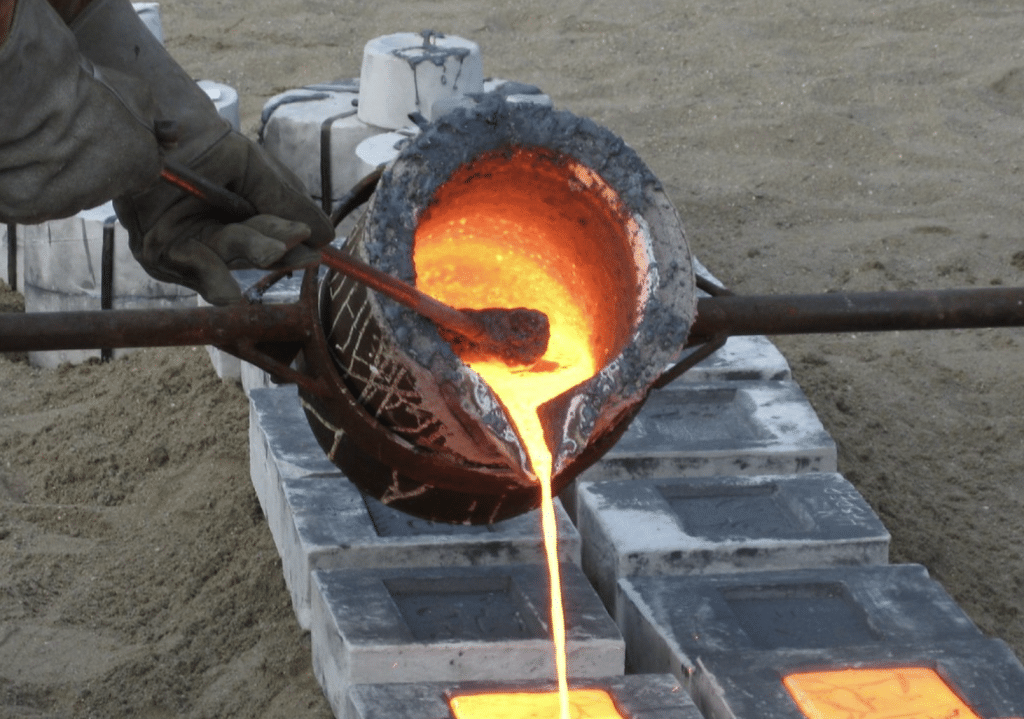The world of steel casting has evolved tremendously over the years, enabling the creation of complex and high-quality products for a variety of industries. One such method at the forefront of this evolution is the “lost-wax” casting technique, which has been embraced by leading steel-casting companies like CIREX. This blog post aims to provide an informative and easy-to-read overview of this versatile method, exploring its benefits and applications in the field of precision steel casting.
The Lost-Wax Casting Process
1.1. Overview
The lost-wax casting method, also known as investment casting, is an age-old process that dates back thousands of years. It involves the creation of a wax pattern, which is then coated in a ceramic material, hardened, and melted away, leaving a cavity into which molten metal is poured. This technique allows for the production of intricate and detailed steel castings with high precision.
1.2. Key Steps
The lost-wax casting process typically consists of the following steps:
Creating a wax pattern: A detailed wax replica of the desired casting is produced, either by hand or using an injection molding process.
Assembling the wax patterns: Multiple wax patterns can be connected using a gating system, forming a “tree” structure that will later accommodate the flow of molten metal.
Investing the wax pattern: The assembled wax patterns are coated in a refractory slurry, forming a ceramic shell around the wax.
Dewaxing: The ceramic shell is heated to harden it and melt away the wax, leaving a cavity in the shape of the desired casting.
Pouring: Molten metal is poured into the cavity, filling the space left by the wax pattern.
Cooling and solidification: The metal cools and solidifies within the ceramic shell, forming the final casting.
Shell removal: The ceramic shell is broken away, revealing the completed casting.
Finishing: The casting is cleaned, and any necessary post-processing steps are performed to meet the desired specifications.
Advantages of the Lost-Wax Casting Method
2.1. Design Flexibility
The lost-wax method enables engineers to achieve considerable freedom in product design, allowing for the creation of intricate and complex shapes that would be difficult or impossible to achieve using other casting techniques.
2.2. Material Choice
With the lost-wax process, a wide range of materials can be used to produce castings, providing flexibility in the choice of materials to best meet the needs of specific applications.
2.3. Precision and Accuracy
The use of wax patterns allows for extremely accurate reproduction of the desired design, resulting in high-quality castings with tight tolerances and minimal machining requirements.
2.4. Surface Finish
Lost-wax castings generally exhibit a smooth surface finish, reducing the need for extensive post-processing and polishing.
Applications of Precision Steel Castings
The versatility and precision of the lost-wax casting method make it suitable for a wide range of industries and applications, including:
Aerospace: Production of intricate components for aircraft engines, landing gear, and other systems.
Automotive: Manufacturing of engine parts, transmission components, and other critical vehicle systems.
Medical: Creation of surgical instruments, implants, and prosthetics with high precision and biocompatibility.
Energy: Production of components for power generation, including gas turbines and renewable energy systems.
Collaborative Development for Optimal Castings
Working with a company like CIREX, which specializes in extreme precision steel casting using the lost-wax method, ensures that clients receive castings tailored to their specific needs and requirements. By engaging in a collaborative development process, clients can achieve an optimal casting outcome that meets their exact specifications, while also benefiting from the expertise of experienced engineers and technicians.
Environmental Considerations
5.1. Resource Efficiency
The lost-wax casting method can contribute to resource efficiency in the manufacturing process. Since the technique produces castings with high precision and minimal machining requirements, less material is wasted during the production process. This results in reduced environmental impact and lower overall costs.
5.2. Recycling
Many materials used in the lost-wax casting process, including the wax and the metal, can be recycled and reused, further minimizing waste and contributing to a more sustainable production process.
Quality Assurance and Control
To ensure the production of high-quality, precision steel castings, it is essential to implement rigorous quality control measures throughout the lost-wax casting process. This may include:
Inspection of wax patterns: Ensuring the accuracy and quality of the wax patterns prior to investing.
Monitoring of the investing process: Ensuring the correct application of the refractory slurry and proper shell thickness.
Metal quality control: Verifying the composition and properties of the molten metal used for casting.
Non-destructive testing: Employing techniques such as radiographic, ultrasonic, or magnetic particle inspection to identify any internal or surface defects in the castings.
The lost-wax method has proven itself to be an invaluable technique in the field of extreme precision steel casting. Its versatility, design freedom, and ability to produce intricate and complex shapes make it a preferred choice for many industries seeking high-quality castings. By partnering with a steel casting specialist like CIREX, clients can expect a collaborative development process that results in optimal castings tailored to their specific needs and requirements. Furthermore, the lost-wax casting process supports resource efficiency and recycling efforts, contributing to a more sustainable manufacturing landscape.
